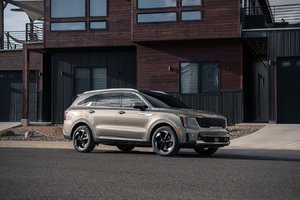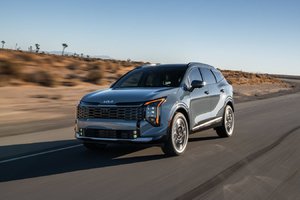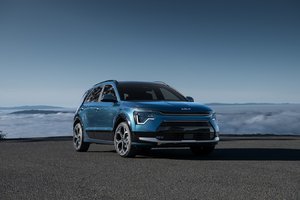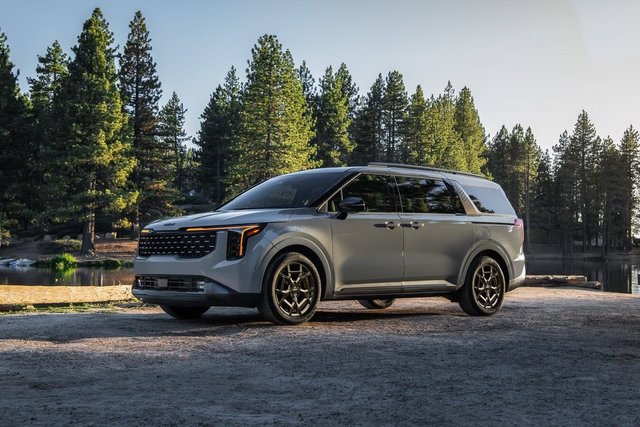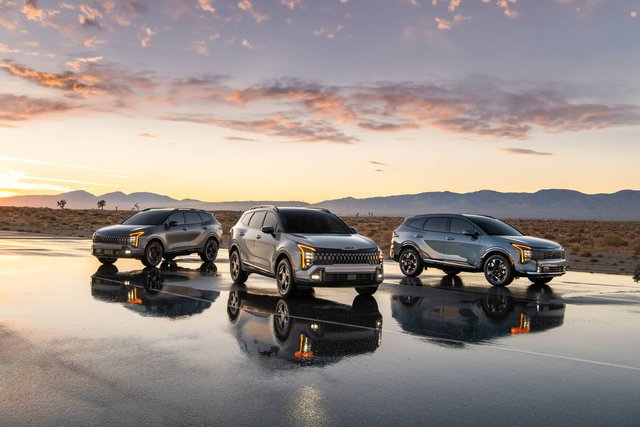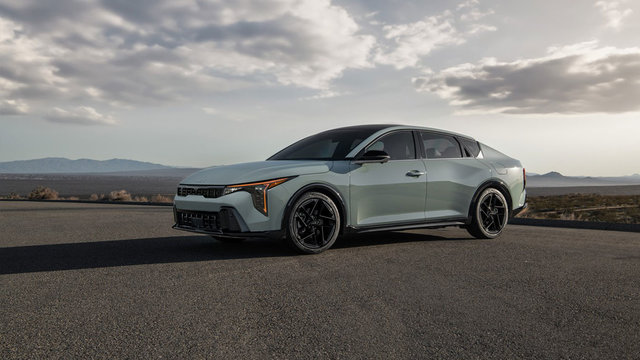The automotive industry is transforming, with hybrid vehicles bridging traditional gasoline-powered cars and fully electric models. Kia, a prominent player in this evolving landscape, offers various hybrid options for enhanced fuel efficiency and reduced emissions. Let's break down each model from the compact Niro to the spacious Carnival to find which is right for you.
Kia's Long-Haul Leader: the Top Range Hybrid Model
The Kia Carnival HEV stands out as the model offering the most substantial total driving range among Kia's current hybrid lineup. According to available specifications, the Carnival HEV boasts an impressive total range of 1000 km. This positions it as the leader in overall travel distance on a single tank and battery charge within Kia's hybrid portfolio.
To provide a clear overview of Kia's hybrid and plug-in hybrid models and their respective ranges, the following table presents a detailed comparison:
| Vehicle |
Battery |
Powertrain |
Seats |
Total Range |
| Niro HEV |
1.3 kWh |
FWD |
5 |
950km |
| Sportage HEV |
1.5 kWh |
AWD |
5 |
838km |
| Sorento HEV |
1.5 kWh |
AWD |
6 |
957km |
| Carnival HEV |
1.5 kWh |
FWD |
7-8 |
1000km |
| Niro PHEV |
11.1 kWh |
FWD |
5 |
770km |
| Sportage PHEV |
13.6 kWh |
AWD |
5 |
626km |
| Sorento PHEV |
14 kWh |
AWD |
6 |
671km |
Understanding Hybrid Electric Vehicles (HEVs)
Hybrid Electric Vehicles, often called HEVs, integrate an internal combustion engine (ICE) with a smaller electric motor and battery system. The electric motor primarily assists the gasoline engine, particularly during low-speed driving, starting from a stop, and acceleration, collectively improving fuel efficiency and reducing emissions. A key characteristic of HEVs is that their batteries are recharged automatically. This occurs through regenerative braking, which captures kinetic energy typically lost during deceleration and converts it back into electricity to replenish the battery. The gasoline engine can also contribute to battery charging while the vehicle is in motion. HEVs do not require external charging; they operate like conventional gasoline cars, with the electric assistance seamlessly managed by the vehicle's system.
Key Advantages of HEVs:
- Enhanced Fuel Efficiency: HEVs achieve significantly better mileage than gasoline-only vehicles. This improvement is particularly noticeable in city driving conditions, where the electric motor can frequently engage to reduce the workload on the gasoline engine.
- No Charging: One of the most appealing aspects of HEVs is their operational simplicity. They do not require any external charging infrastructure and function identically to a traditional gasoline car regarding refuelling. This offers immense convenience for drivers without access to home or public charging stations.
- Lower Upfront Cost: Generally, HEVs are less expensive to purchase than their PHEV or fully electric counterparts, making them a more accessible entry point into electrified motoring.
- Long-Distance Capability: HEVs often provide a superior total driving range on a single fuel tank, making them a practical and convenient choice for frequent long trips or extended highway driving without concerns about finding charging points.
Understanding Plug-in Hybrid Electric Vehicles (PHEVs)
Plug-in Hybrid Electric Vehicles (PHEVs) represent an evolution of the hybrid concept, combining an internal combustion engine with an electric motor. However, PHEVs are distinguished by their significantly larger battery packs than HEVs. This larger battery capacity enables a substantial all-electric driving range, typically allowing the vehicle to operate solely on electricity for distances ranging from 24 to 97 km before the gasoline engine is required. A defining feature of PHEVs is their ability to recharge their batteries by plugging into an external power source, such as a standard household electrical outlet or a dedicated charging station. This external charging capability complements the regenerative braking and internal combustion engine charging methods also found in HEVs.
Key Advantages of PHEVs:
- Extended All-Electric Range: A PHEV's primary advantage is its capacity for daily commutes or short trips with zero tailpipe emissions and minimal to no gasoline consumption. Kia models like the Niro PHEV (53km), Sportage PHEV (54km), and Sorento PHEV (51km) demonstrate competitive electric ranges.
- Lower Emissions: By maximizing electric-only driving, PHEVs offer a greater potential for reducing greenhouse gas emissions than conventional HEVs or traditional gasoline vehicles.
- Potential Long-Term Fuel Savings: Drivers who consistently charge their vehicle and utilize its electric range for daily driving can drastically reduce gasoline consumption, leading to considerable long-term fuel cost savings.
- Versatility: PHEVs offer a "best of both worlds" proposition, providing the benefits of electric driving for routine needs while retaining the flexibility and range of a gasoline engine for longer journeys, effectively eliminating range anxiety.
Making Your Choice: Which Kia Hybrid Suits Your Lifestyle?
Selecting between a Kia HEV and a Kia PHEV ultimately depends on carefully assessing individual driving habits, access to charging infrastructure, and financial priorities. Both technologies offer compelling benefits over traditional gasoline vehicles, but cater to different needs and lifestyles.
Consider Your Daily Commute and Driving Habits:
- Short, Predictable Commutes: A Kia PHEV offers significant advantages if daily travel distances are consistently within the all-electric range of a PHEV, and there is reliable access to charging. It allows for substantial, or even full, electric-only driving, drastically reducing gasoline consumption and tailpipe emissions for routine trips.
- Frequent Long-Distance Trips or Mixed Driving: For individuals who regularly undertake longer journeys, including frequent highway travel, or whose driving patterns are unpredictable, a Kia HEV might be the more practical choice. It provides excellent overall fuel efficiency without charging stops, offering a longer total range and greater convenience for extended travels.
Assess Your Access to Charging:
- Reliable Home/Work Charging: A PHEV's benefits are maximized when consistent access to charging is available. This enables frequent utilization of its electric-only mode, leading to optimal fuel savings and emission reductions.
- Limited or No Charging Access: If reliable access to home or public charging is not feasible, an HEV is more suitable. HEVs recharge their batteries automatically through driving and regenerative braking, eliminating any reliance on external charging infrastructure.
Evaluate Your Budget and Long-Term Costs:
- Upfront Cost: HEVs generally have a lower initial purchase price, making them a more budget-friendly option for those with upfront cost constraints.
- Long-Term Fuel Savings: While PHEVs typically have a higher upfront cost, they can offer substantial long-term fuel savings if regularly charged and the electric range is utilized.






